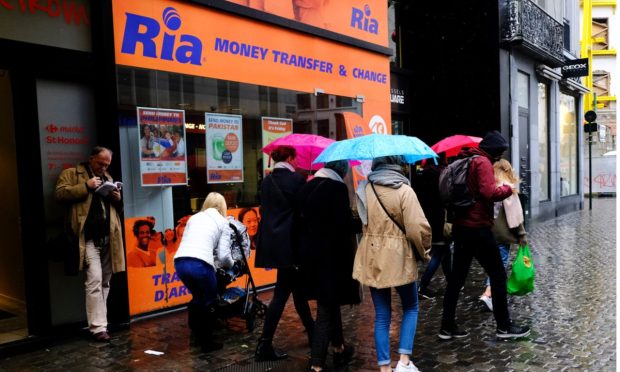Cross-Border Remittances Go Omnichannel for Growth

Like other industries, the pandemic saw remittance customers shifting from traditional brick-and-mortar environments to the digital space, with some customers using an app to transfer funds and check exchange rates for the first time.
According to Jose Ivars-Lopez, U.K. and Ireland country manager at Ria, a business segment of Euronet Worldwide and leading cross-border money transfer firm, 2023 is witnessing a consolidation of that trend, with investments in digitization starting to yield fruit. “What we built three years ago is now paying off,” he told PYMNTS in an interview.
He pointed to the onboarding of more locations in West Africa as one of the highlights for the firm as it looks to simplify remittances from the U.K. to emerging markets like Guinea and Sierra Leone.
“Sierra Leone is now in our top 10 list of recipients receiving money through our digital service, with customers from the U.K. sending money using the app for cash payouts,” Ivars-Lopez noted. He added that the fact that 70% of the country’s population is Muslim has led to a spike in digital remittances during festivities like Ramadan.
The African continent in general holds great promise, he further said, referring to the region as the “next big thing” in the global remittance market due in part to increasingly large populations receiving funds from abroad and more money being transferred between neighboring countries.
When it comes to balancing in-person and digital remittances, he said both are growing in parallel as some customers still prefer the option of face-to-face interaction with agents.
In fact, the need for an omnichannel approach is one he didn’t anticipate. “I was expecting a complete migration from brick-and-mortar to digital [these last few years] but that never happened,” he said, adding that the company is still growing double digits in the brick-and-mortar traditional channel.
He attributed the strong demand for in-person services to “proximity and trust,” pointing to customers, especially older ones, who are still on the fence about how safe the technology behind the app is.
Overall, he said the growth of both physical and digital channels has strengthened Ria’s drive to provide a “real omnichannel solution” offered in different languages, “from self-service kiosks to point-of-sale to the app and to the web.”
Expanding Reach vs Acquiring Customers
According to Ivars-Lopez, the remittance firm has expanded aggressively in the mobile wallet space in the last five years to power real-time cross-border payments for recipients.
This is especially critical in emerging markets across Africa, where customers rely heavily on mobile wallets — more than 50% of people in most markets, he previously told PYMNTS — for international money transfers.
“It doesn’t matter if it’s 5 in the morning in the U.K. or it’s lunchtime, sending money abroad really works well,” he noted, adding, “You can see the real-time benefits not only on a theoretical level, but also on a practical level for our customers.”
Moving forward, he said the focus is on growing the number of destination countries Ria serves, pointing to the recent acquisition of South African money transfer operator Sikhona Forex as an example of how Ria plans to drive that growth while keeping costs low.
“When we are the ones managing our own payouts, we can pass the savings back to the customer, which ensures that the whole structure works in a natural, organic way,” he explained.
Finally, he stressed the need to expand reach instead of focusing on acquiring new customers, which though easier, makes little difference in accelerating growth.
As Ivars-Lopez said: “The real value lies in how many people you can reach, either through digital means including mobile wallets or through physical payout points. That’s what’s key for this industry.”
For all PYMNTS EMEA coverage, subscribe to the daily EMEA Newsletter.

